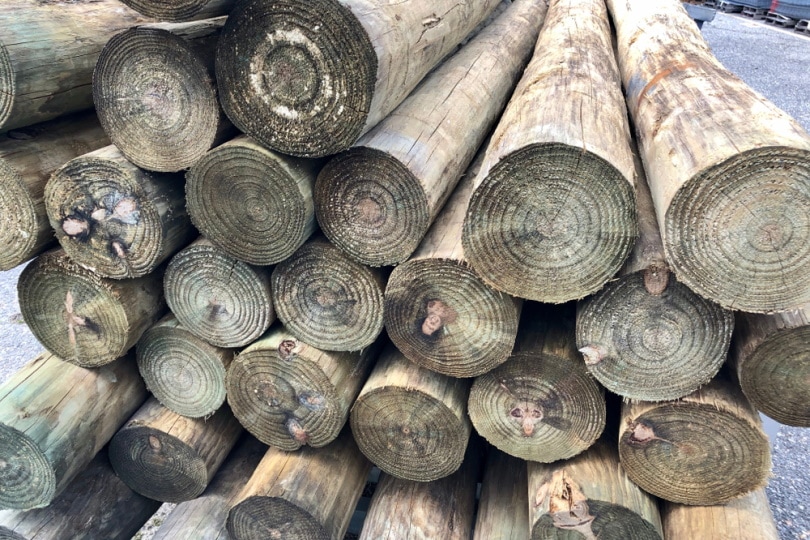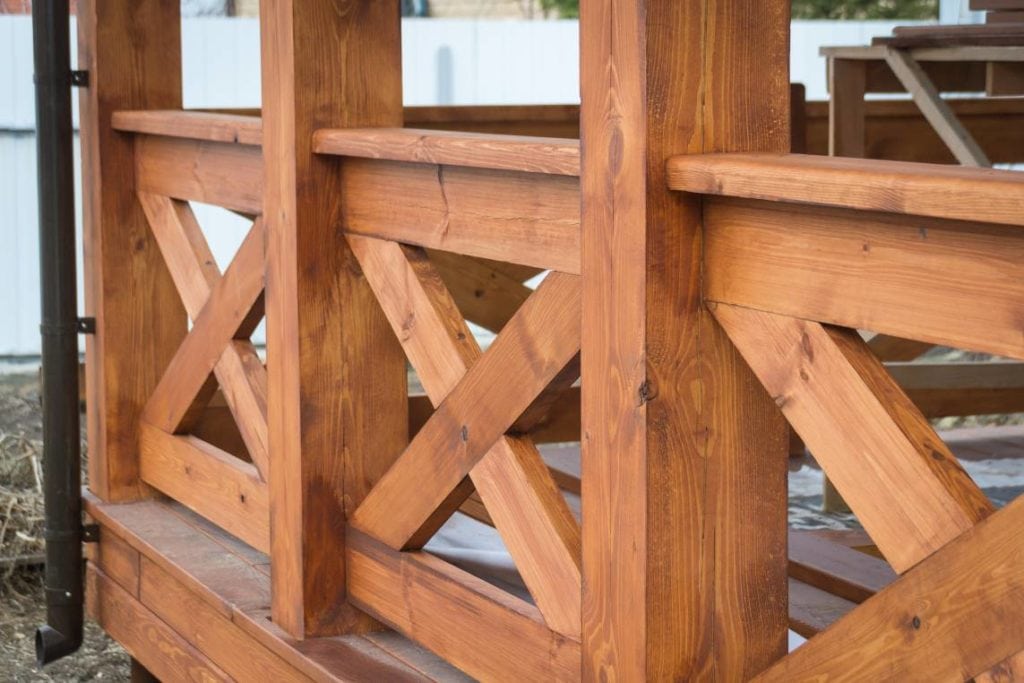How Long Does Pressure Treated Wood Last? Longevity, Grades & Rot
-
Kristin Hitchcock
- Last updated:

In most cases, pressure-treated wood lasts for up to 40 years. However, its lifespan does depend on the type of wood, what it’s used for, and how you maintain it. The climate also has a major effect on durability—some climates are simply harder on wood than others. After 40 years, you should expect to see some rot and decay on your pressure-treated wood.
On the other hand, the wood used for floorings and decks will likely last only a decade. Usually, this wood experiences more wear, which leads to a shorter lifespan.
There are a few ways you can make pressure-treated wood last longer. For instance, applying sealants can keep water from penetrating the wood. You should also clean any mildew off the wood as soon as you notice it.
Factors that Affect Longevity
There are several factors that affect the longevity of pressure-treated wood. Where and how you use the wood has a huge impact on how long it lasts. If you use the wood closer to the ground, it is more likely to absorb water and rot. Dirt and bugs can do a number on wood durability, so expect these posts to last less time.
Of course, if you sink wood into concrete or gravel, then it may last longer. It all depends on how much water the wood is exposed to.
Horizontal boards installed face-up can soak up water faster than other boards. Boards that are slanted or upright tend to shed water easily thanks to gravity, which eliminates the odds of them rotting.
For the most part, pressure-treated wood can withstand insects well. However, it is not as strong against prolonged moisture. Therefore, wetter climates will see pressure-treated lumber failing sooner than dry climates.
How much maintenance you put into the wood also matters. Wood that is cleaned and sealed at least yearly will last much longer than wood that isn’t. Therefore, if you want your wood to last a long time, you should be careful to seal it properly and clean any mildew that pops up.

Pressure-Treated Wood Grades – And Why They Matter
Pressure-treated wood comes in a variety of different grades. While these grades don’t have a direct impact on a wood’s longevity, they do affect the wood’s overall quality. Only some grades are considered high-quality.
Better grade lumber has very few knots and cuts. Therefore, it is less likely to warp or twist, which affects the durability of the wood. Usually, this grade of wood is utilized on decks and railing where it is seen. Construction-grade wood is extremely rough, but because it is used out of the way, what it looks like doesn’t matter all that much.
Sometimes, you can also get your hands on premium grades. Usually, these are much stronger than other options and have a great appearance. However, they are typically reserved for special orders or are extremely expensive. Therefore, they typically are only used in very important projects.
For your average deck, a mixture of grade 1 and grade 2 lumber is utilized in most cases. If you live in a rural area, only grade 2 lumber may be available. Be sure to purchase dried lumber, as any lumber that is wet may shrink. In some cases, this shrinking may cause extra defects. You don’t want to purchase grade 2 lumber that turns into construction grade when it shrinks.
Look for KDAT lumber, which is kiln-dried after treatment. Usually, this lumber has much less moisture in it.
The type of preservation done on the wood may also have an effect on the grade. There are tons of different formulas out there for treating wood. The AWPA sets standards for all preservations used. Therefore, the grade will take the preservation method into account.
What Causes Pressure Treated Wood to Rot?
There are several things that can cause pressure-treated wood to rot. Knowing what these things are can help you keep your wood in tip-top shape and elongate its lifespan. While this wood is treated on the outside, the inside is not as impervious to moisture. Therefore, keeping water from getting into the wood is vital.
If you cut pressure-treated wood, you must seal the ends. Otherwise, rot and insect damage can occur quickly, as the ends will have no protection.
You should also avoid painting, sealing, or staining the wood before it is completely dry. Otherwise, the moisture still in the wood will remain locked inside. These substances may prevent moisture from moving into the wood, but they also prevent moisture from leaving the wood.
Galvanic rot can occur in pressure-treated wood. This type of rot occurs due to chemicals in galvanized materials. The chemical preservatives in the wood react to galvanized materials, which causes corrosion on the surface of the wood. Eventually, this corrosion will eat through the wood and cause it to fail. Therefore, be sure to use stainless steel fastenings.
Any splits or cracks in boards will allow moisture to get inside, causing rot. At some point, this is not completely avoidable. Most pieces of wood will crack eventually. However, quality wood can withstand a lot of use before cracking.
Fungi can sometimes penetrate pressure-treated wood. While this wood is insect- and moisture-resistant, most types are not impenetrable by fungi. Most pressure-treated wood has a layer of fungicide, which helps protect them, but this layer wears off faster than you’d expect. To maintain this protection, you’ll need to reapply fungicide every year or even twice a year in some areas.
Fungi can enter very small cracks and pores in the wood. Once inside, the fungi will set up camp and multiply, slowly eating away at the wood. Eventually, they will eat so much of the wood that it will cause structural damage. Eventually, this leads to cracks, which allows moisture inside.
To prevent rot, pressure-treated wood must have the ability to dry. If water simply sits on the wood, then it will rot – even with all the preservatives. However, without proper air circulation, drying is not possible. The top and underside of the wood must dry efficiently. Therefore, if there is tons of vegetation or water nearby, the wood may have trouble drying completely.
Improving airflow will often improve the lifespan of the wood, as it prevents moisture from building up in the first place.
Conclusion
Pressure-treated wood usually lasts from nine to 30 years. However, how you care for the wood helps determine its lifespan too. Regularly sealing the wood prevents rot and insect infestations, which can quickly lead to structural failure. Therefore, we recommend re-sealing and applying fungicide to all pressure-treated wood at least once a year. Decks are particularly susceptible to these problems, as they are exposed to the elements.
The type of pressure-treated wood also matters. Not all wood is made equal. Some types of wood are simply better than others and can withstand heavier use. Carefully read labels when considering what type of pressure-treated wood to purchase.
- https://www.lumber.com/blog/what-you-need-to-know-about-pressure-treated-wood#:~:text=How%20Long%20Does%20Pressure-Treated,only%20last%20around%2010%20years.
- https://plasticinehouse.com/how-long-does-pressure-treated-wood-last/
- https://www.clp-inc.com/how-long-does-pressure-treated-wood-last/
Featured Image Credit: jadimages, Shutterstock
Contents
